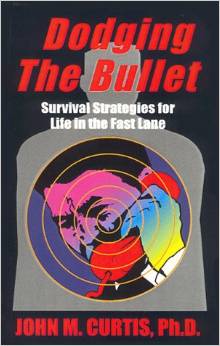Voting 5-4, a divided Supreme Court ruled today that President Donald Trump’s Travel Ban 3.0 is “squarely within” the president’s power under Article 2. In Trump v. Hawaii, the State of Hawaii could not prove that the intent of Trump’s travel ban, as alleged, was to discriminate against Muslims, violating the First Amendment’s guarantee of religious freedom Democrats and their friends in the press accused Trump of racism and xenophobia for instituting under the Immigration and Naturalization Act. [ACT] a temporary ban on citizens from Chad, Iran, Iraq, Libya, North Korea, Syria and Venezuela Trump’s Justice Department argued that a temporary ban was necessary to prevent future terrorist acts from washing up on American soil. Trump cited several well-know examples of Mideast terrorism wreaking havoc from Orlando, Florida to San Bernardino, Calif.
Plaintiffs from the State of Hawaii argued that Trump’s past comments against Muslims prove that the ban was actually motivated by racism, not a desire to protect U.S. national security. U.S. District Court Judges issued stays on Trump’s travel ban, citing discrimination against Muslim nations, purely for religious purposes. .Trump’s detractors made the issue about religion, when the High Court only looked at whether Trump under Article 2 of the Constitution had the authority to restrict access into the United States for national security purposes. “In this era of worldwide terrorism and extremist movements bent on harming innocent civilians, we must properly vet those coming into our country . . .” Trump tweeted, rehashing his Solicitor General Benjamin Bristow’s argument before the Supreme Court that indiscriminate immigration poses as clear-and-present danger to U.S. citizens.
Welcoming the Supreme Court ruling as “vindication” of his Travel Ban 3.0, Trump spoke about the reasoning behind the ruling. “As long as I am president, I will defend the sovereignty, safely and security of the American People, and fight for an immigration system that serves the national interests of the United States and its citizens. Our country will always be safe, secure and protected on my watch,” tweeted Trump. Trump’s been slammed by Democrats and the press for enforcing immigrations laws on the Mexican border. Making a big deal about separating border law-breakers from their children, Democrats have used the mess on the Mexican border as proof of Trump’s racism and xenophobia. Never mind that the same problems happened routinely under former President Barack Obama. Looking to score points in an election year, Democrats held Trump’s feet to the fire.
Writing for the conservative majority, Supreme Court Supreme Justice John Roberts confirmed Trump’s authority from the travel ban under Article 2. “The government has set forth a sufficient national security justification to survive a rational basis review. We express no view on the soundness of the policy. We simply hold today that plaintiffs have not demonstrated a likelihood of success on the merits of their constitutional claim,” wrote Roberts, rejecting claims that Trump implemented a racist travel ban. “The proclamation is squarely within the scope of Presidential Authority under the INA,” wrote Roberts, referring the Immigration and Naturalization Act. Roberts said there was nothing in the wording of Trump’s travel ban that stated or implied religious discrimination, citing some countries, like Venezuela and North Korea that have no Muslims.
Writing for the Minority, Justice Sonya Sotomayer focused on Trump’s travel ban failing to protect religious liberty, the same argument given by the plaintiffs. Calling Trump’s travel ban a “total and completed shutdown of Muslims entering the United States,” Sotomayer shows that even Supreme Court justices hold prejudicial views. Sotomayer cited Trump past statements about Muslims as proof the travel ban violated the First Amendment. But as Roberts pointed out, there was nothing in Trump’s travel ban that mentioned anything about Muslims. American Civil Liberties Union said the ruling will “go down in history as one of Supreme Court’s greatest failures,” repeating Democrats’ talking points that the ban was about religious discrimination, not about national security. Instead of admitting that Roberts got it right, the descent rehashed only Democrat talking points.
Adding Supreme Court Neil Gorsuch to the High Court April 8, 2017 has been a real asset to Trump, providing a solid conservative majority. Ruling today that Trump was within hi Constitutional authority as commander-in-chief, Roberts set the record straight about the law. Crying religious discrimination doesn’t make it so, without reviewing all the facts in Hawaii v. the United States. Citing Trump’s past campaign rhetoric, before or after inauguration, isn’t relevant to the legal questions asked-and-answered in today’s Supreme Court ruling. ACLU Immigrant Rights Project Omar Jadwat said it’s up to the people to fight Trump’s travel ban, insisting that Trump’s travel ban discriminates against Muslims. Jadwat shows utter contempt for the Supreme Court and rule of law. When the Supreme Court rules, the time for incendiary rhetoric is over—something the ACLU must accept.



